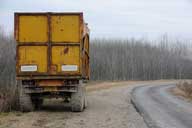





















Galileo Rocca
Parmeggiani Art Gallery
6th May - 12th June 2011 winner of the Off section of Fotografia Europea 2010 |
 Luzzara I, Luzzara 2010 © Galileo Rocca
|






















Galileo Rocca
Parmeggiani Art Gallery
6th May - 12th June 2011 winner of the Off section of Fotografia Europea 2010 |
 Luzzara I, Luzzara 2010 © Galileo Rocca
|